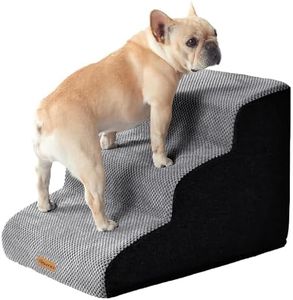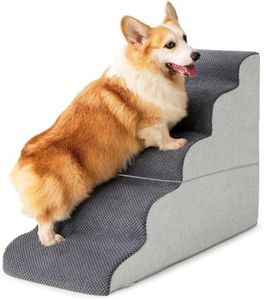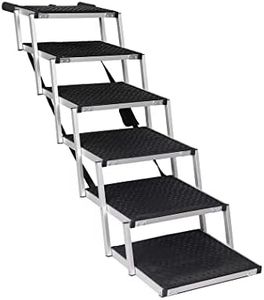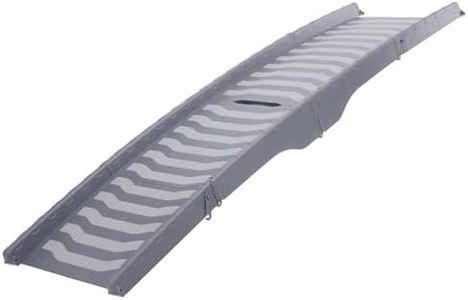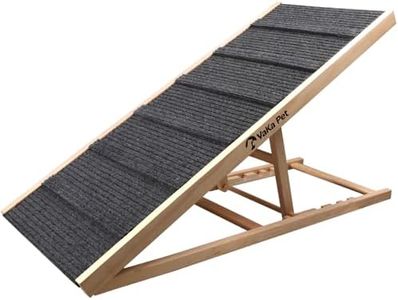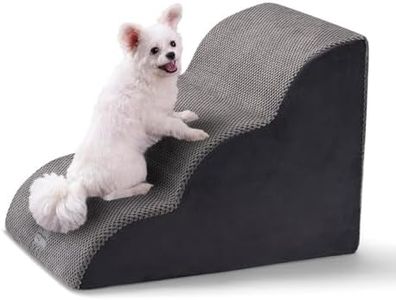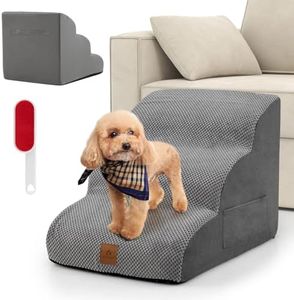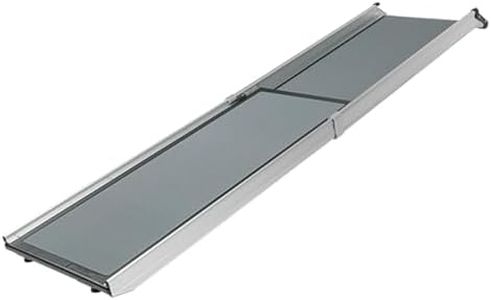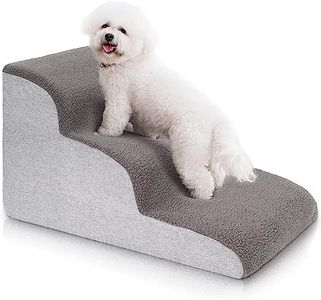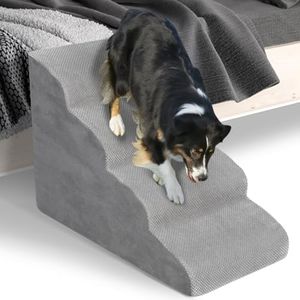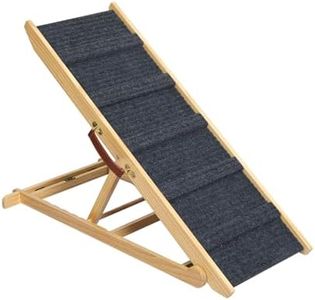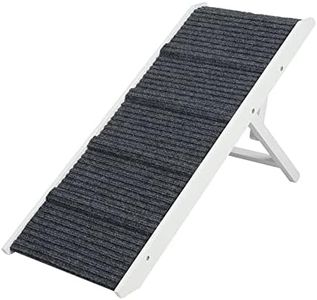We Use CookiesWe use cookies to enhance the security, performance,
functionality and for analytical and promotional activities. By continuing to browse this site you
are agreeing to our privacy policy
10 Best Dog Ramps For Stairs
From leading brands and best sellers available on the web.Buying Guide for the Best Dog Ramps For Stairs
Choosing a dog ramp for stairs is about ensuring your pet's comfort and safety when navigating up or down heights. Whether your dog is a puppy, senior, recovering from surgery, or just small in size, a suitable ramp can help prevent injuries and make their movement easier. To pick the best one, you'll want to consider ramp dimensions, surface material, weight capacity, portability, and ease of cleaning. Understanding these features will help you match the ramp not only to your dog's needs but also to the space and lifestyle you have at home.Length and SlopeThe length of the ramp directly affects the steepness of the incline. A longer ramp will have a gentler slope, which is easier and safer for your dog, especially for those with mobility problems or joint pain. Shorter ramps are steeper, which can be challenging for older, injured, or very small dogs. To select the right length, consider the height of your stairs and your dog's ability—if your dog is small or has difficulty with climbing, opt for a longer ramp to reduce the angle.
WidthRamp width determines how much room your dog has to walk without slipping off the sides. Narrow ramps save space, but may feel unstable for larger breeds. Wider ramps offer more security and comfort, especially for bigger or anxious dogs. Choose a width that matches your dog's size and walking style—a compact ramp may suffice for small breeds, while a roomier one is better for large or wobbly dogs.
Surface Material and TractionThe surface material of the ramp provides grip for your dog's paws. Good traction prevents slipping, which is crucial for pets with mobility issues. Popular surfaces include carpet, textured rubber, or ridged plastic. For everyday use and maximum safety, look for non-slip materials. Consider your dog's nails and fur—some materials are better suited for grip, while others are easier to clean if your dog sheds a lot.
Weight CapacityWeight capacity is the maximum load the ramp can support without bending or breaking. It's important to select a ramp that's rated above your dog's weight for safety. Ramps with higher capacities are sometimes heavier and sturdier, while lighter ones may be intended for small breeds. Always check your pet's weight and add a little to the ramp's capacity for a safe choice, especially if you have a growing puppy or a chunky dog.
Portability and StorageSome ramps are designed to fold or collapse for easy transport or storage, which is useful if you need to use the ramp in different locations or want to put it away when not in use. Portable ramps are generally lighter and easier to handle, but they may be less sturdy. If you plan to keep the ramp permanently by the stairs, sturdier construction may matter more than portability.
Ease of CleaningDogs can bring dirt, hair, or even accidents onto their ramp, so easy cleaning is a plus. Some ramps have removable or washable covers, while others are simply wiped down. If your dog is messy or sheds a lot, look for materials that resist hair and stains or can be quickly cleaned with a vacuum or damp cloth.

